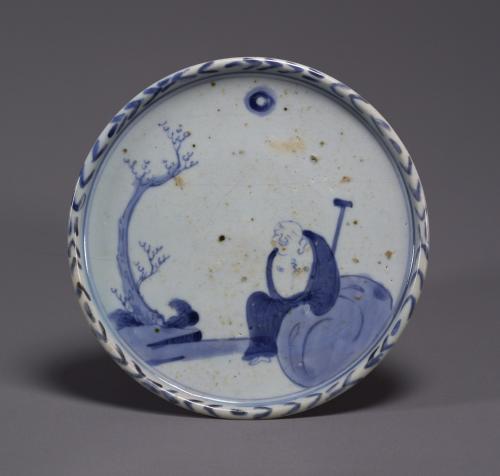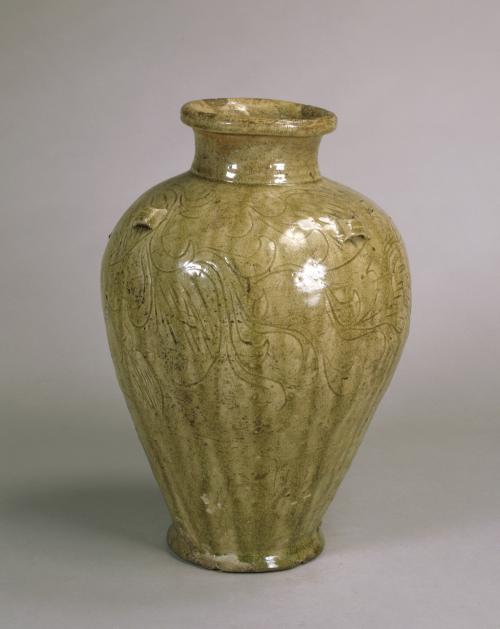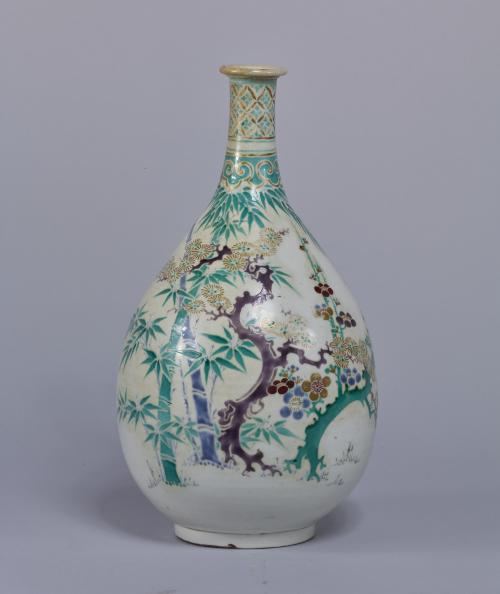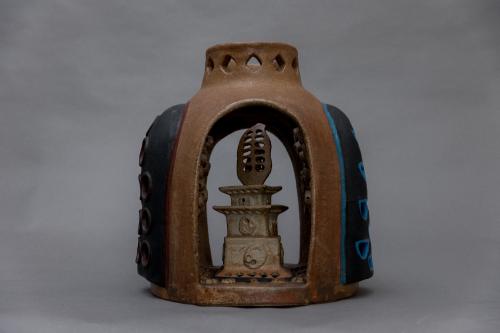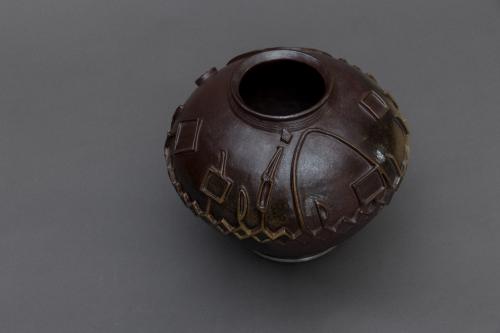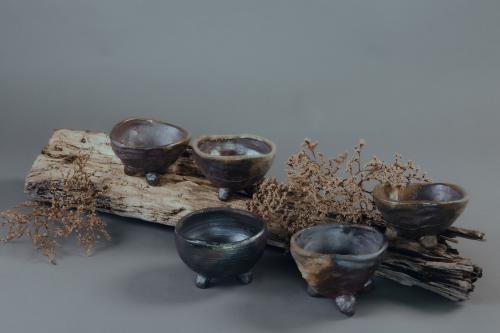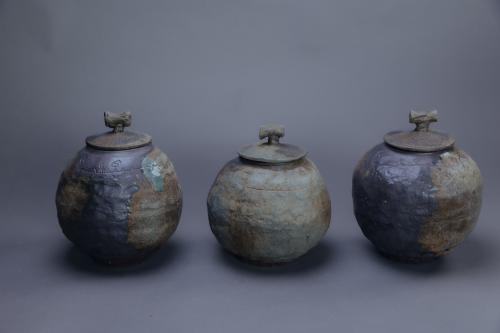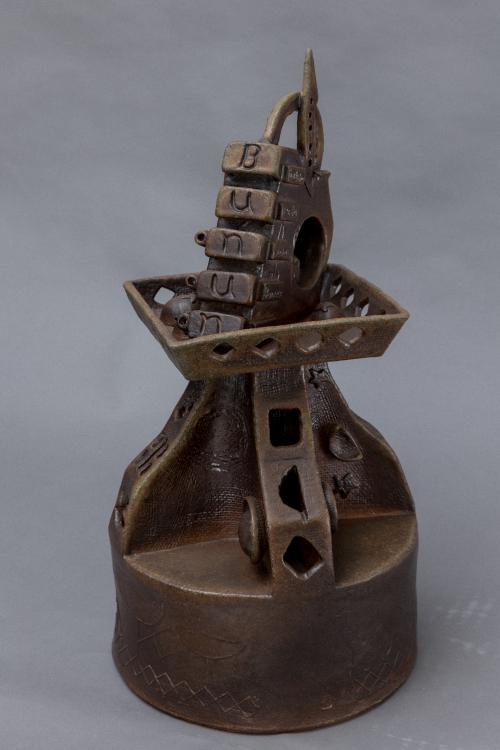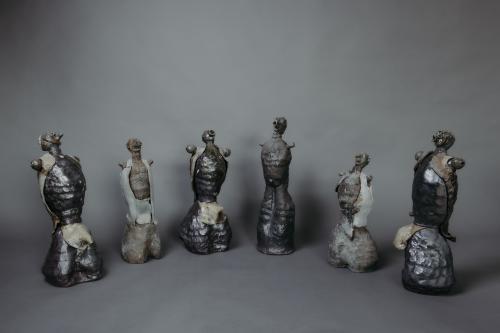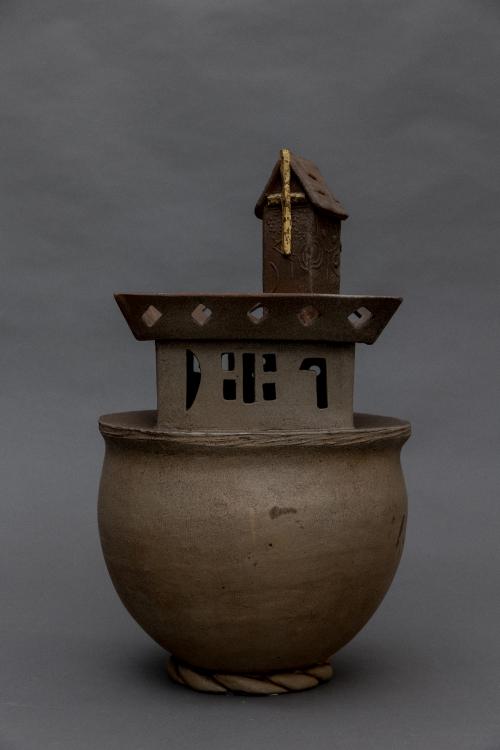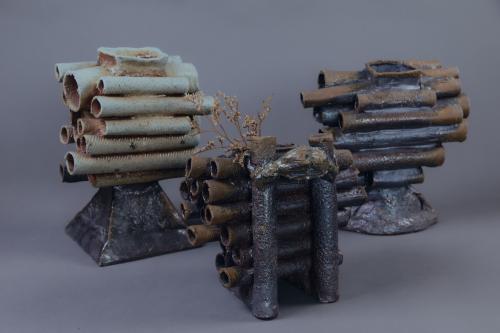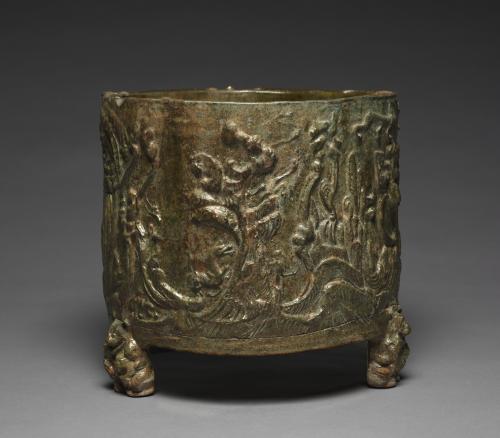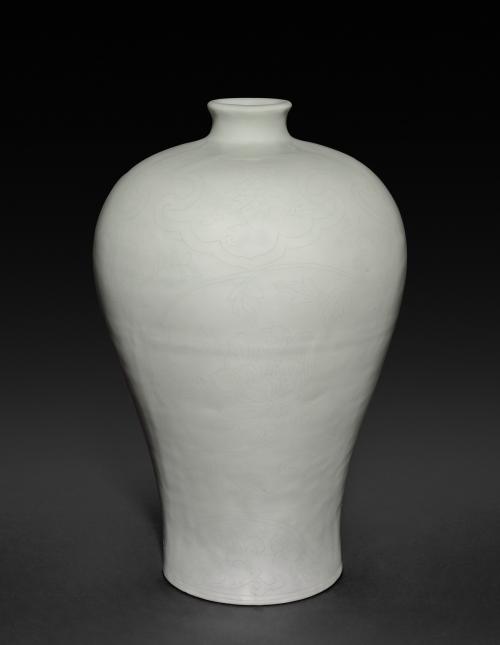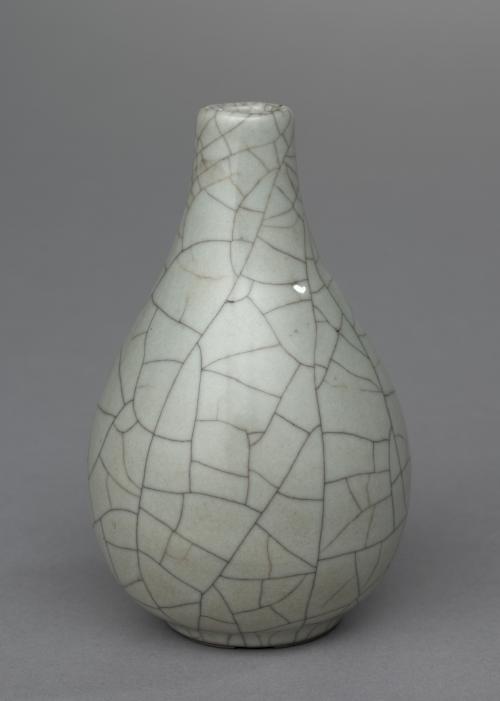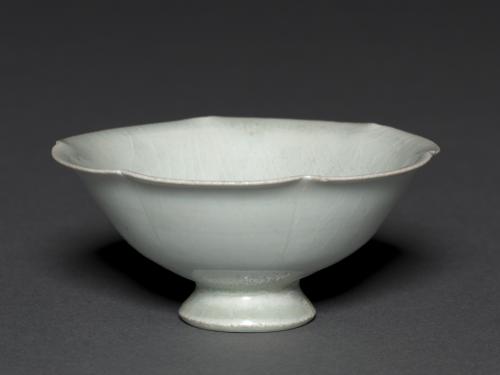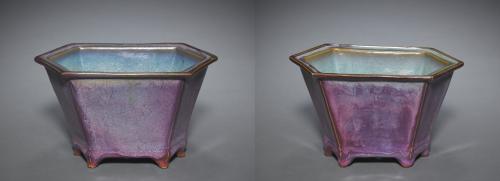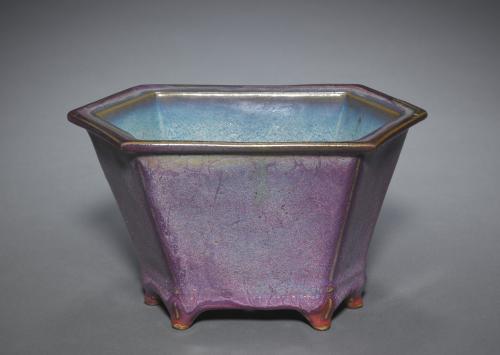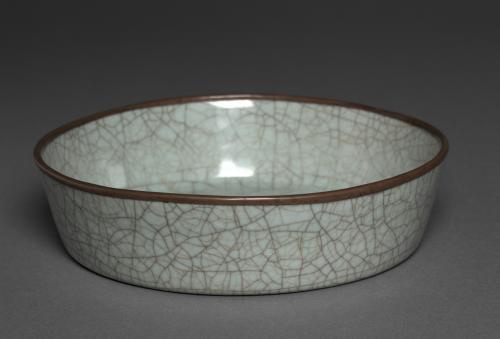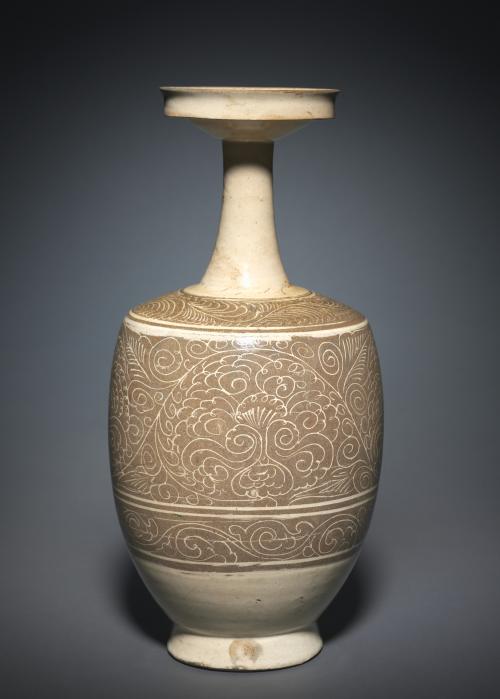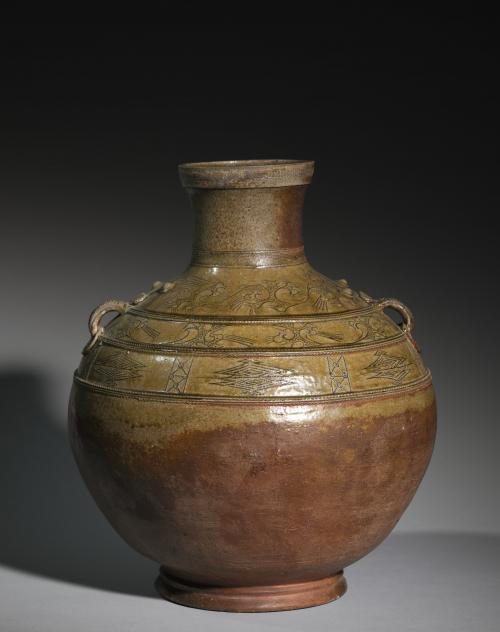全部藏品
探索988個藏品
亞泥事件
全東明
作品簡介:
本作品從外到裡共有三層,最外層的左右邊分別有十六個月亮和十六個太陽,都代表臺灣的十六個原住民族。作品的第二層左右兩邊各有一隻手,第三層右邊的太魯閣族的圖騰代表事件是發生在Truku(太魯閣族)的領域上,左邊是鎖鍊,代表他們被捆住解不開。
創作背景:
板曆陶甕
全東明
作品簡介:
臺灣島上以漢人為人口最多的族群,但根據考古與遷移研究發現,其實最早來到此落腳的是極有可能是Bunun(布農族)與Atayal(泰雅族),估計有五千至一萬年之久,這段期間一直缺乏文字紀錄,被稱為史前時期。
三石灶茶碗
李文廣
二十年前陶藝家李文廣想設計自己需求的碗杯,於是把常在山裏烹煮食物看到立三個石頭上面置放鐵鍋來煮食的結構設計此碗杯,並取名[三石灶碗 杯],流線不規則的碗口是山的稜線,歷經多年製作(三石灶碗/杯)已經是他的特色標制,尤其經柴燒更有陶藝家李文廣 Haisul的味道。
茶倉
李文廣
以擠坯成型,加上以兩個石頭內外拍打坯體,在頸部刻畫Islulusan(布農族祭事曆)的Maqanion mogoma(開墾祭)符號來表現,同時也嘗試從頭到尾氧化燒,外觀也許沒有那麼的工整,坯體印有石頭拍打的痕蹟,充滿著陶藝家 李文廣 Haisul手感的溫度。
那瑪夏的春天
全東明
作品簡介:
民國九十八年 (2009年)八月九日因莫拉克颱風襲臺,導致高雄小林村九至十八鄰一百多戶人家的家園全毀,四百六十二位居民罹難,同為Dian(全東明)看到族人朋友受難,心裡很難過,而有了這件作品的創作。
創作背景:
柴火的記憶
李文廣
在2021年台灣陶藝學會聯展主體 Haisul(李文廣)想創作另類的東西,想到幼年生活,母親每次山上工作回家總是背負一捆木柴回家燒煮用,路上妹妹走不動就放木頭上一起背回家。此作品傳達早期生活是一捆木頭燒煮養家人,木頭上妹妹是花朵底座是高山,因為Bunun(布農族)為高山民族。
Cylindrical Jar
The Cleveland Museum of Art
Vessels like this often are call "hill jars" since many survive with conical covers shaped in rising peaks.
Meiping Vase with Cloud Collars and Peony Sprays
The Cleveland Museum of Art
This beautiful vase, called a meiping, is a testimony to the extremely high standards demanded for imperial white porcelain of the Yongle period.
Bottle Vase: Guan ware
The Cleveland Museum of Art
An 18th-century Korean collector Yu Man-joo (1755–1788) wrote that “spending money on luxury clothing, dishes, and decorations for the home is a waste
Brush Rest: Guan ware
Cleveland Museum of Art
An 18th-century Korean collector Yu Man-joo (1755–1788) wrote that “spending money on luxury clothing, dishes, and decorations for the home is a waste
Cup and Stand
The Cleveland Museum of Art
The kilns of Jingdezhen in Jiangxi province produced an extremely delicate porcelain made from the local resources of kaolin (white China clay) and pe
Dish
The Cleveland Museum of Art
Former director Sherman Lee stressed the significance of technical innovation in his study of Chinese ceramics.
Pair of Hexagonal Flower Pots
The Cleveland Museum of Art
This deep hexagonal flowerpot, one of a pair in the collection, is numbered "8" and bears additional inscriptions to indicate specifically t
Hexagonal Flower Pot
The Cleveland Museum of Art
This deep hexagonal flowerpot, one of a pair in the collection, is numbered "8" and bears additional inscriptions to indicate specifically t
Basin
The Cleveland Museum of Art
Guan ware was the official ware fired at the Southern Song imperial kilns in Hangzhou. Multiple glazing is characteristic of this ware.
Vase with Floral Scrolls
The Cleveland Museum of Art
Cizhou ware characteristically shows the use of slip coating, bold designs, and color contrasts to achieve stunning visual effects.
Jar (Hu)
The Cleveland Museum of Art
This superb Han dynasty jar has a robust shape imitating that of the bronze (hu) and is covered with a thin brownish-green glaze.
Pair of Bowls with Peony Sprays on Diaper Ground (exterior); Chrysanthemum Sprays (interior)
Cleveland Museum of Art
The production of extraordinarily refined Qing imperial wares such as these could have involved the transportation of undecorated, plain porcelains fr
Chicken-Headed Ewer
Cleveland Museum of Art
The development of high-fired celadon in the south was a significant achievement in Chinese ceramics history.

